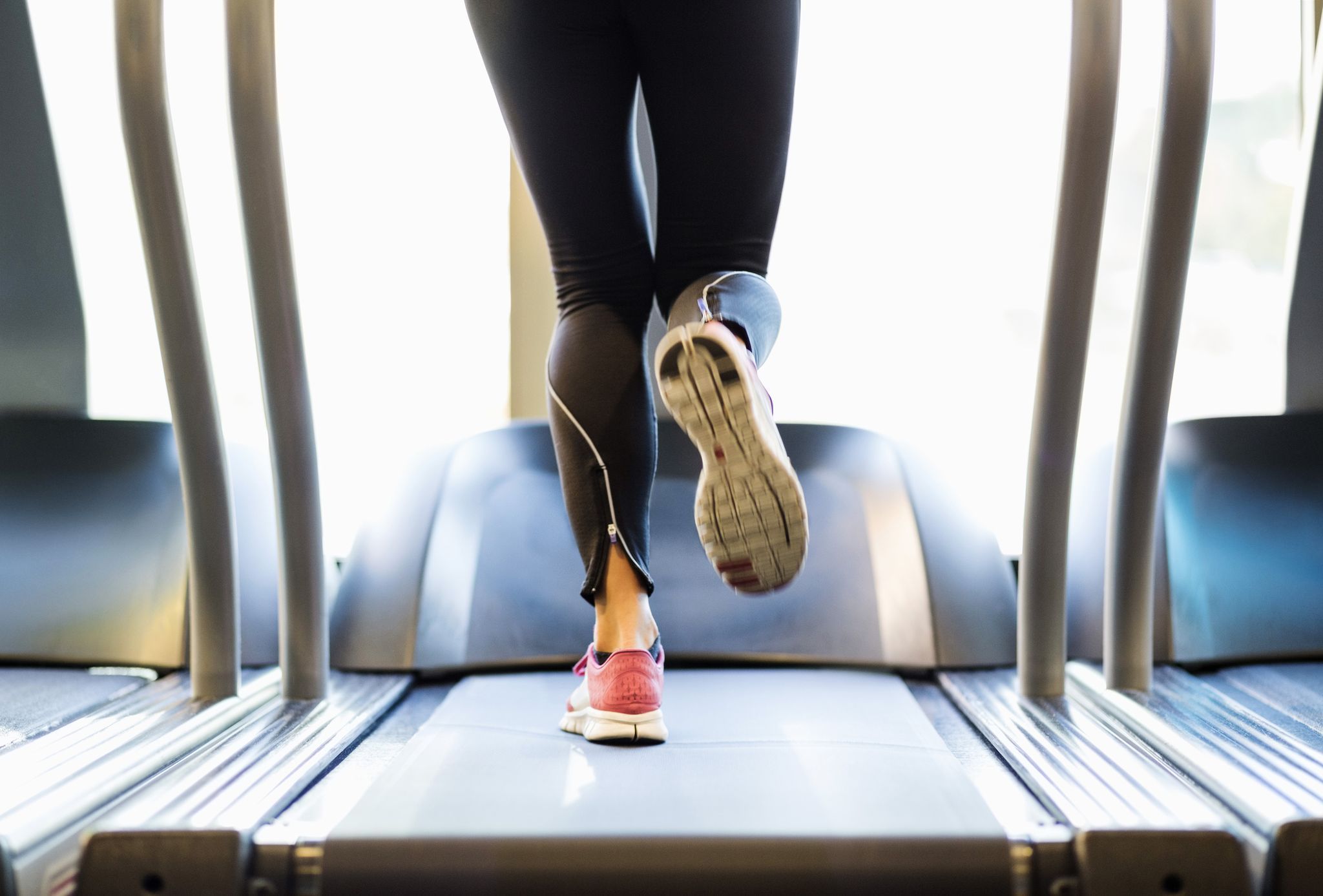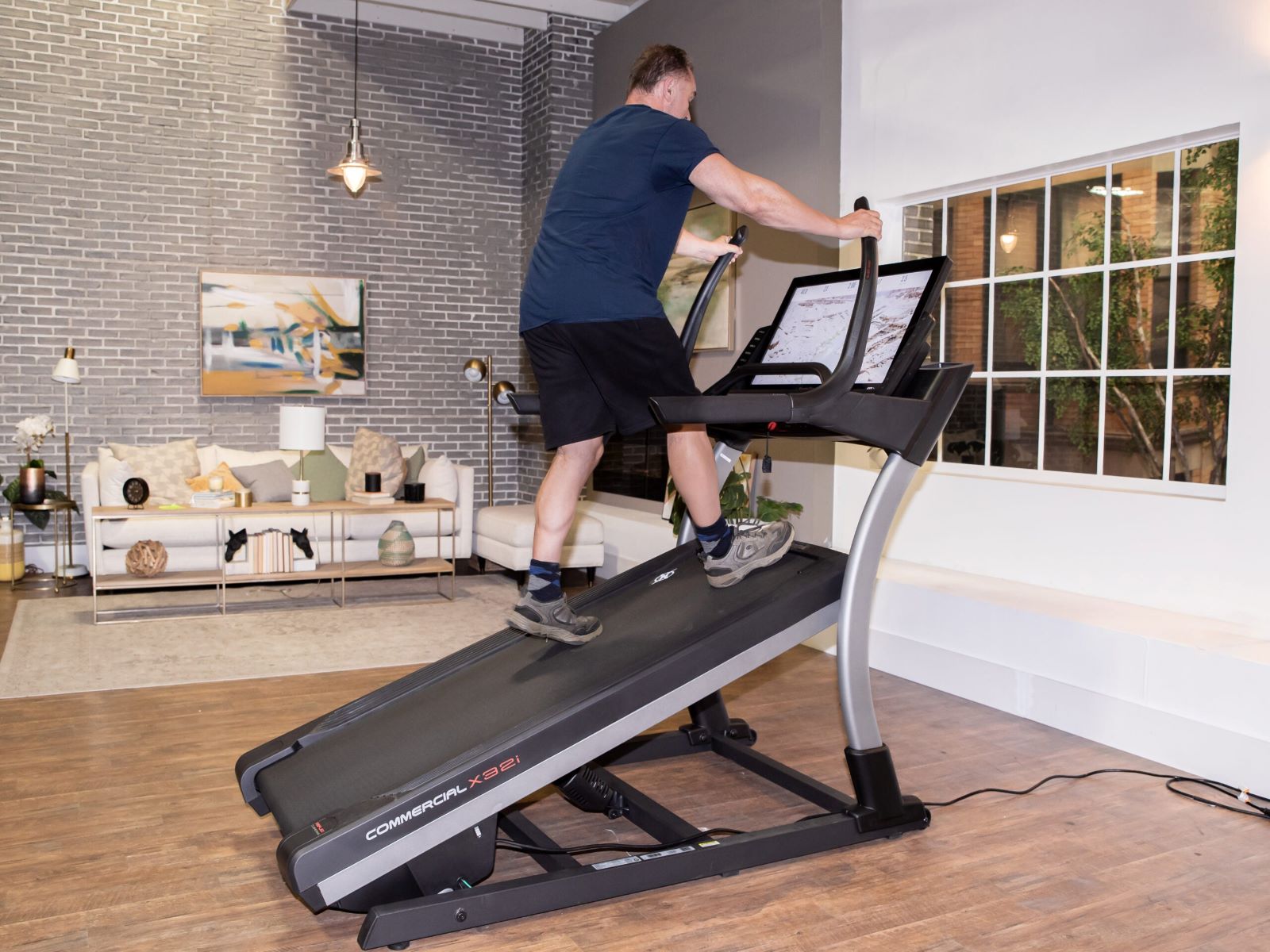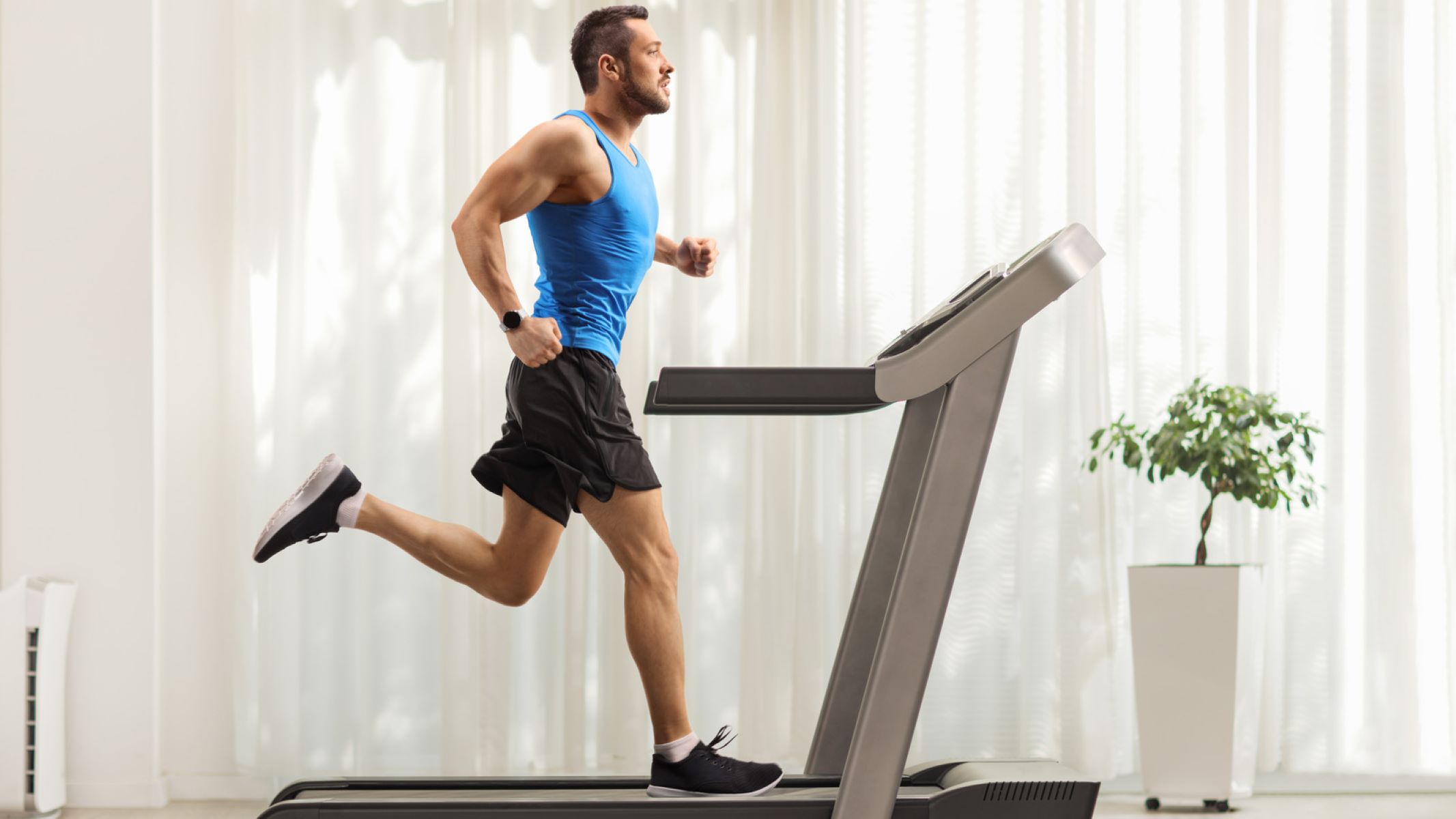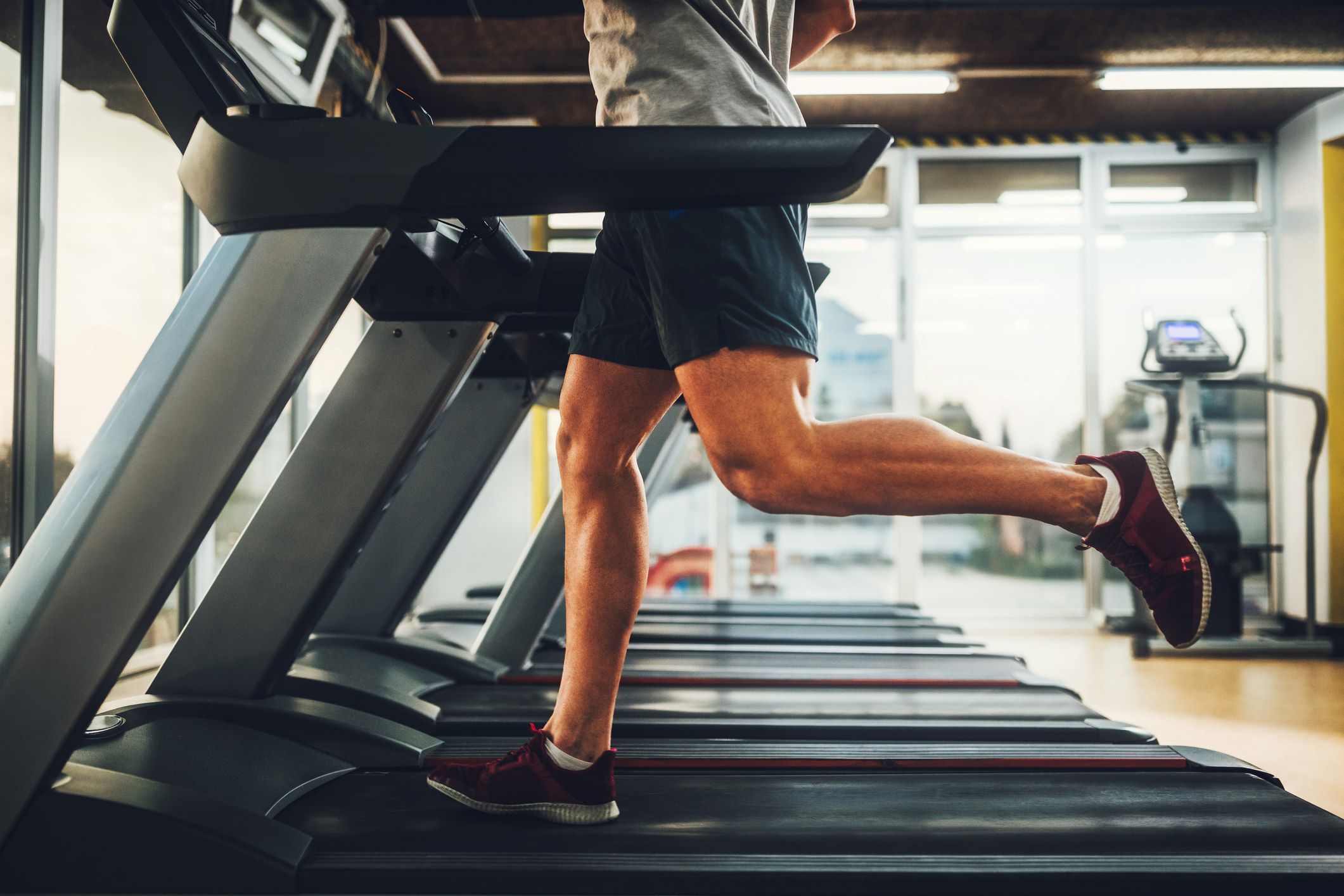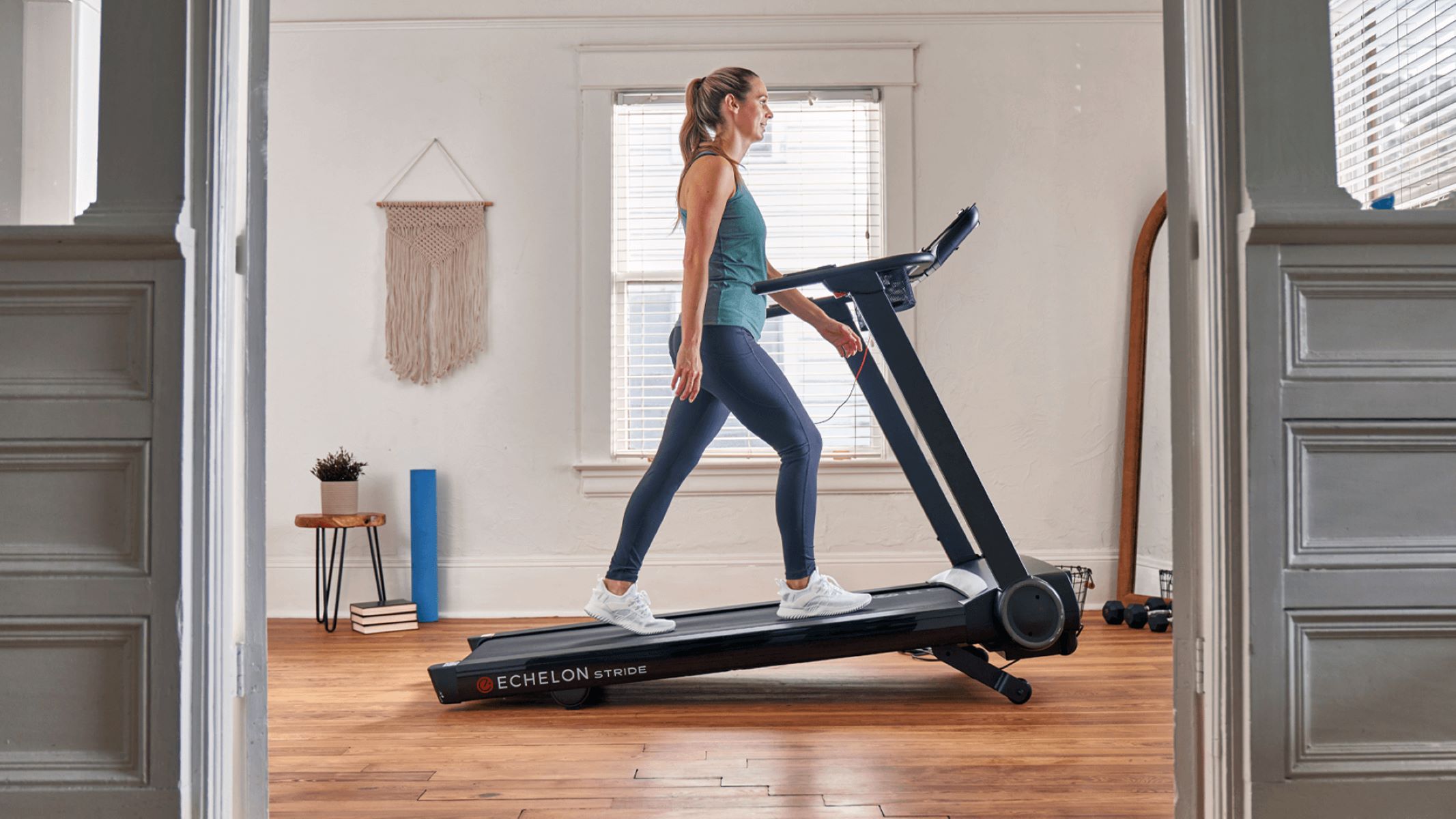Home>Misc>Featured>How To Burn 1000 Calories On The Treadmill
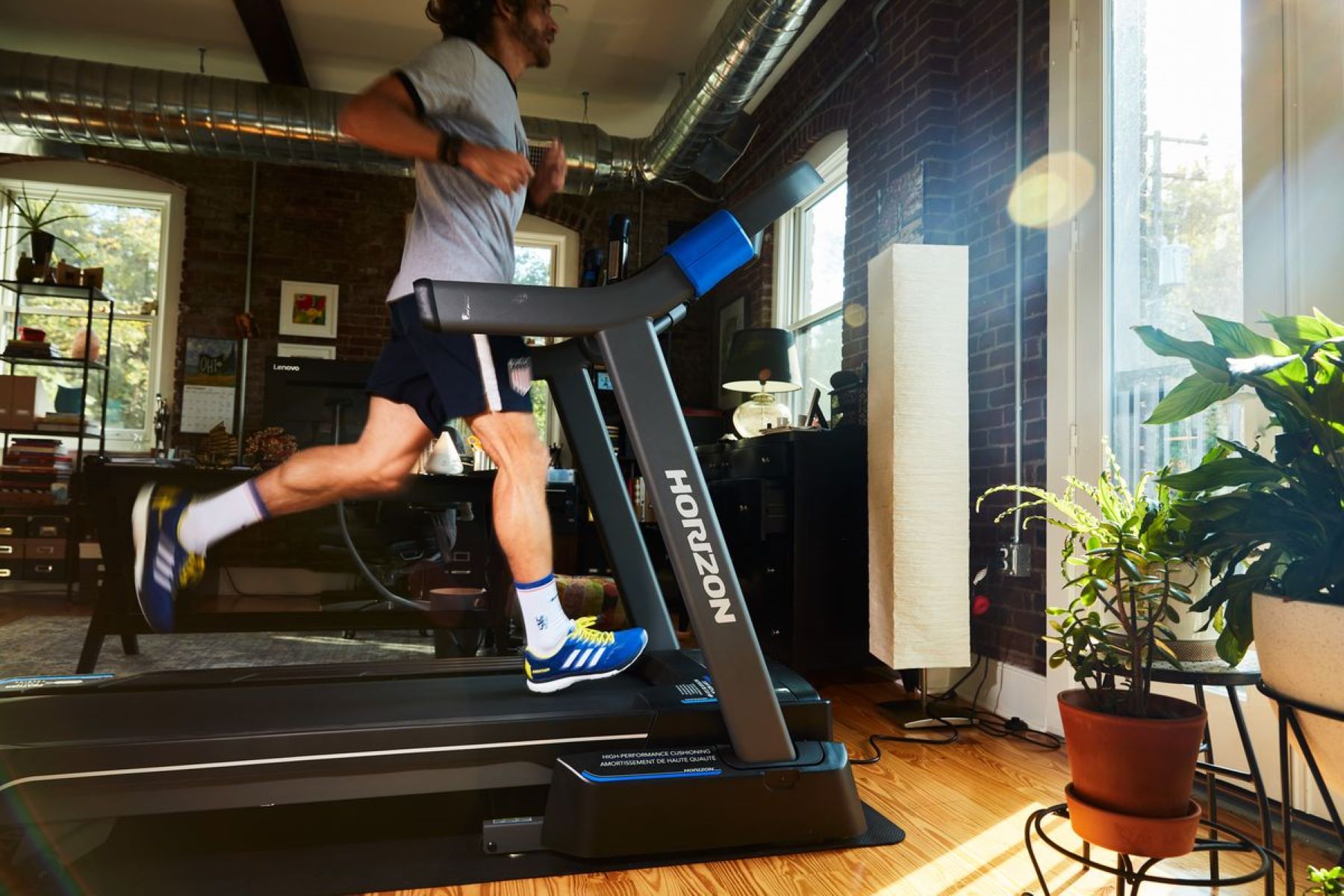

Featured
How To Burn 1000 Calories On The Treadmill
Modified: August 21, 2023
Discover how to burn 1000 calories on the treadmill with our featured workouts. Take your fitness to the next level and achieve your weight loss goals.
Introduction
Welcome to the world of fitness and endurance! If you’re looking to shed those extra pounds, improve your cardiovascular health, and boost your fitness level, burning 1000 calories on the treadmill is an excellent goal to set for yourself. Not only will it help you achieve your weight loss goals, but it will also provide numerous other benefits for your overall well-being.
Using a treadmill for your cardio workouts is an efficient and effective way to burn calories and improve your fitness level. It offers a controlled environment where you can adjust the speed, incline, and intensity to suit your needs. Whether you’re a beginner or an experienced athlete, the treadmill provides a versatile platform to challenge yourself and achieve your fitness goals.
In this article, we will guide you through various techniques and strategies to help you burn 1000 calories on the treadmill. We’ll provide you with a step-by-step approach, ensuring safety and maximizing the calorie-burning potential of your workouts. So, let’s lace up your shoes, get on that treadmill, and let the calorie-burning journey begin!
Benefits of Burning 1000 Calories on the Treadmill
Burning 1000 calories on the treadmill is no easy feat, but the benefits that come with this level of intensity are worth the effort. Let’s take a look at some of the incredible benefits you can enjoy by pushing yourself to burn that many calories during your treadmill workout:
- Weight Loss: Burning 1000 calories on the treadmill can significantly contribute to your weight loss journey. By creating a caloric deficit, you can start shedding those extra pounds and achieve your desired body composition.
- Improved Cardiovascular Health: Engaging in intense treadmill workouts elevates your heart rate, which strengthens your cardiovascular system. Regular exercise on the treadmill can help reduce the risk of heart disease, lower blood pressure, and improve overall heart health.
- Increased Endurance: Pushing yourself to burn 1000 calories on the treadmill challenges your physical limits. Through consistent effort, you’ll gradually increase your endurance capacity, allowing you to perform better in other physical activities.
- Mood Enhancement: Treadmill workouts release endorphins, commonly known as “feel-good” hormones. This can help alleviate stress, anxiety, and depression, improving your overall mood and mental well-being.
- Boosted Metabolism: Intense workouts like burning 1000 calories on the treadmill can have a significant impact on your metabolism. It helps increase your resting metabolic rate, enabling your body to burn more calories even at rest.
- Improved Lung Capacity: Engaging in challenging treadmill workouts requires deep and controlled breathing. This can help expand your lung capacity over time, leading to improved oxygen uptake and enhanced respiratory function.
- Strengthens Muscles: Running or walking on the treadmill engages various muscle groups, including your legs, core, and glutes. Regular workouts at this intensity help tone and strengthen these muscles, leading to improved overall body strength.
By striving to burn 1000 calories on the treadmill, you’ll not only achieve your weight loss goals but also enjoy a multitude of health benefits. Remember to consult a healthcare professional before starting any intense exercise regimen, especially if you have any underlying medical conditions.
Safety Precautions
Before embarking on a rigorous workout program like burning 1000 calories on the treadmill, it is essential to prioritize your safety to prevent injuries and ensure a smooth fitness journey. Here are some crucial safety precautions to keep in mind:
- Warm-Up Properly: Always start your treadmill session with a proper warm-up routine. Spend 5-10 minutes briskly walking or slow jogging to increase blood flow, warm up your muscles, and prepare your body for the intense workout ahead.
- Stay Hydrated: Proper hydration is crucial during any workout. Make sure to drink enough water before, during, and after your treadmill session to prevent dehydration. Keep a water bottle nearby and sip water regularly throughout your workout.
- Listen to Your Body: Pay attention to your body’s cues and avoid pushing yourself beyond your limits. If you experience pain, dizziness, or shortness of breath, slow down or stop your workout. It’s important to distinguish between pushing yourself and risking injury.
- Use Proper Form: Maintain good posture while running or walking on the treadmill. Keep your shoulders relaxed, engage your core, and land each step with a mid-foot strike. Using proper form reduces the risk of strain, fatigue, and injury.
- Gradually Increase Intensity: If you’re new to intense treadmill workouts, gradually increase the intensity and duration of your sessions. Start with shorter workout sessions and slowly build up to longer, more intense workouts. This allows your body to adapt and minimize the risk of overexertion.
- Incorporate Rest Days: Give your body time to recover and repair by including rest days in your workout schedule. Overtraining can lead to fatigue, injuries, and burnout. Listen to your body and take rest days to prevent overuse injuries.
- Wear Proper Footwear: Invest in a pair of well-fitting, cushioned running or walking shoes. The right footwear provides support, cushioning, and stability, reducing the risk of foot and ankle injuries.
Remember, your safety is paramount, and it’s crucial to consult with a healthcare professional before starting any high-intensity workout regimen, especially if you have any underlying health conditions. Following these safety precautions will help ensure a safe and enjoyable treadmill workout experience.
Warm-Up Routine
A proper warm-up routine is essential before diving into an intense session of burning 1000 calories on the treadmill. Warming up prepares your body for the workout ahead by increasing blood flow to your muscles and warming up your joints. Here’s a suggested warm-up routine to get you started:
- Brisk Walking: Begin your warm-up by walking briskly on the treadmill for about 5 minutes. This will gradually increase your heart rate and body temperature in preparation for the workout.
- Dynamic Stretches: Perform a series of dynamic stretches to activate your muscles and improve flexibility. Include exercises like leg swings, arm circles, high knees, and butt kicks to target different muscle groups.
- Joint Rotations: Move through gentle joint rotations to warm up your major joints, including your ankles, knees, hips, and shoulders. This will help improve joint mobility and reduce the risk of injuries during the workout.
- Light Jogging: Transition from brisk walking to a light jogging pace for another 5 minutes. Gradually increase your speed to get your heart rate up and prepare your body for more intense exercise.
- Dynamic Lunges: Incorporate dynamic lunges to further activate your leg muscles. Perform walking lunges or reverse lunges, alternating between legs, to engage your quadriceps, hamstrings, and glutes.
- Arm Swings: Stand tall and swing your arms in large circles, both forward and backward. This will warm up your shoulders, chest, and back muscles, preparing them for the arm movements involved in the treadmill workout.
- Deep Breathing: Take a few moments to practice deep breathing exercises. Inhale deeply through your nose, filling your lungs with air, and exhale slowly through your mouth. This will help calm your mind and focus your energy.
Remember to adapt the warm-up routine to your fitness level and gradually increase the intensity as you progress. It’s essential to listen to your body during the warm-up and make any necessary adjustments to avoid straining your muscles or joints. With a proper warm-up, you’ll be ready to tackle the challenge of burning 1000 calories on the treadmill!
Interval Training
Interval training is a highly effective method for burning calories and improving cardiovascular fitness. It involves alternating between periods of high-intensity exercise and active recovery. Incorporating interval training into your treadmill workout can help you burn 1000 calories more efficiently. Here’s how you can incorporate interval training on the treadmill:
- Warm-Up: Begin with a 5-minute warm-up routine, as mentioned earlier, to prepare your body for the workout.
- Work Interval: Start with a work interval of high-intensity exercise, such as running or sprinting, for 1-2 minutes. Push yourself to a challenging pace where it feels difficult to maintain the speed.
- Recovery Interval: Follow the work interval with a recovery interval of lower intensity exercise, such as brisk walking or slow jogging, for 1-2 minutes. This allows your heart rate to come down and provides a short period of active recovery.
- Repeat: Continue alternating between the work and recovery intervals for a total of 10-15 sets, depending on your fitness level and the duration of your workout. Aim to maintain a consistent intensity throughout the work intervals.
- Cool-Down: Conclude your interval training session with a 5-minute cooldown routine, focusing on gradually reducing your heart rate and allowing your body to recover.
Interval training challenges your cardiovascular system, increases your metabolic rate, and burns calories long after your workout is over. It also helps improve your endurance and can be adjusted to accommodate different fitness levels. Remember to listen to your body during the high-intensity work intervals and adjust the speed and duration accordingly. With consistent interval training, you’ll be well on your way to burning 1000 calories on the treadmill.
Hill Climbing
Hill climbing is an excellent technique to add intensity to your treadmill workout and maximize calorie burn. It simulates the challenge of running or walking uphill, engaging more muscles and increasing the overall intensity of your workout. Here’s how you can incorporate hill climbing into your treadmill session:
- Warm-Up: Begin with a 5-minute warm-up routine, as mentioned earlier, to prepare your body for the workout.
- Adjust the Incline: Increase the incline on the treadmill to mimic the sensation of running or walking uphill. Start with a moderate incline of around 3-4% and gradually increase it as you progress.
- Choose Your Speed: Set your treadmill to a pace that challenges you but allows you to maintain proper form throughout the workout.
- Hill Climbing Interval: Start by running or power walking at a comfortable pace for 2-3 minutes on the elevated incline.
- Recovery Period: Reduce the incline back to a flat position and continue walking or jogging at a comfortable pace for 1-2 minutes to recover.
- Repeat: Alternate between hill climbing intervals and recovery periods for a total of 8-10 rounds, depending on your fitness level and the duration of your workout.
- Cool-Down: Conclude your hill climbing session with a 5-minute cooldown routine, gradually reducing the incline and speed to bring your heart rate down.
Hill climbing not only increases the calorie burn by engaging more muscles, but it also strengthens your lower body, particularly your glutes, quads, and calves. It improves your endurance and helps develop muscular power. Remember to maintain good form, keeping your chest lifted and core engaged, throughout the hill climbing intervals. With consistent practice, you’ll conquer those “hills” and reach your 1000-calorie burning goal on the treadmill!
Sprint Intervals
Sprint intervals are a powerful method to increase the intensity of your treadmill workout and burn a significant amount of calories. By incorporating short bursts of maximum effort followed by periods of recovery, sprint intervals challenge your cardiovascular system and stimulate fat burning. Here’s how you can incorporate sprint intervals into your treadmill session:
- Warm-Up: Begin with a 5-minute warm-up routine, as mentioned earlier, to prepare your body for the workout.
- Choose Your Speed: Set the treadmill to a moderate pace that allows you to comfortably sprint. This should be faster than your regular running or jogging speed.
- Sprint Interval: Start by sprinting at maximum effort for 20-30 seconds. Increase your speed to a challenging pace that pushes your limits. Focus on maintaining proper form and pumping your arms to generate momentum.
- Recovery Period: After the sprint interval, reduce the speed to a comfortable pace for 1-2 minutes to recover. Allow your heart rate to come down and catch your breath.
- Repeat: Repeat the sprint and recovery intervals for a total of 6-8 sets, depending on your fitness level and the duration of your workout.
- Cool-Down: Conclude your sprint interval session with a 5-minute cooldown routine, gradually reducing your speed to a walking pace and allowing your body to recover.
Sprint intervals are a time-efficient way to boost your metabolism, improve your cardiovascular fitness, and burn a significant number of calories in a shorter period. They also help improve your anaerobic power and increase your overall running speed. Remember to listen to your body and adjust the speed and duration of the sprint intervals to suit your fitness level. With consistent practice, you’ll be sprinting your way to burning 1000 calories on the treadmill!
High-Intensity Interval Training (HIIT)
High-Intensity Interval Training (HIIT) is a popular and effective workout technique that involves alternating between short bursts of intense exercise and brief recovery periods. Incorporating HIIT into your treadmill workout can help you burn 1000 calories and improve your overall fitness level. Here’s how you can incorporate HIIT into your treadmill routine:
- Warm-Up: Begin with a 5-minute warm-up routine, as mentioned earlier, to prepare your body for the workout.
- Choose Your Intervals: Select two to three exercises that target different muscle groups and can be performed at high intensity on the treadmill. Some examples include sprinting, burpees, jumping jacks, or mountain climbers.
- Work Interval: Perform the first exercise at maximum effort for 20-30 seconds. Push yourself to your limits and give it your all during this high-intensity phase.
- Recovery Interval: After each work interval, take a short 10-15 seconds recovery period where you transition to the next exercise or slow down your pace on the treadmill. Use this time to catch your breath and prepare for the next round.
- Repeat: Alternate between the different exercises, performing each for 20-30 seconds, followed by the recovery interval. Aim for a total of 6-8 rounds, depending on your fitness level and the duration of your workout.
- Cool-Down: Finish your HIIT session with a 5-minute cooldown routine, gradually slowing down your pace or reducing the intensity, to allow your heart rate to lower and your body to recover.
HIIT workouts on the treadmill are efficient at burning calories, improving cardiovascular fitness, and enhancing overall athletic performance. The intense bursts of exercise followed by short recovery periods challenge your body in a unique way and stimulate fat burning. Remember to maintain proper form during each exercise, and if any particular movement causes discomfort or pain, modify it or consult a fitness professional. Incorporating HIIT into your treadmill routine will take your calorie-burning efforts to the next level!
Incline Power Walking
Incline power walking is an effective exercise technique that engages multiple muscle groups and helps you burn more calories on the treadmill. By increasing the incline and walking at a brisk pace, you can intensify your workout and challenge your cardiovascular system. Here’s how you can incorporate incline power walking into your treadmill routine:
- Warm-Up: Begin with a 5-minute warm-up routine, as mentioned earlier, to prepare your body for the workout.
- Incline Adjustment: Increase the incline on the treadmill to a moderate level, such as 5-7%, to simulate walking uphill. This elevation will engage your lower body muscles and increase the intensity of your workout.
- Pace: Start walking briskly at a pace that challenges you but still allows you to maintain proper form and technique. Swing your arms and maintain an upright posture throughout the exercise.
- Duration: Aim to power walk at this incline for 20-30 minutes, gradually increasing the duration as your fitness level improves.
- Variations: To add variety to your workout, you can alternate between walking at a constant incline and incorporating short bursts of higher intensity by increasing your speed for a minute or two.
- Cool-Down: Conclude your incline power walking session with a 5-minute cooldown routine, gradually reducing the incline and pace to allow your heart rate to lower and your body to recover.
Incline power walking is a low-impact exercise that targets your lower body, including your calves, quads, and glutes. It improves cardiovascular endurance, strengthens muscles, and enhances overall fitness. Remember to listen to your body and adjust the incline and pace to suit your fitness level. With consistent incline power walking, you’ll challenge yourself and burn calories effectively on the treadmill.
Cool-Down Routine
A proper cool-down routine is just as important as the warm-up before and the workout itself. Cooling down allows your body to gradually transition from intense exercise to a state of rest, promoting recovery and reducing the risk of muscle soreness. Here’s how you can perform a comprehensive cool-down routine after your treadmill workout:
- Gradually Reduce Speed: As you near the end of your treadmill workout, gradually reduce the speed or intensity. This gradual decrease in intensity helps bring down your heart rate and allows your body to adjust.
- Walk or Light Jog: Continue walking or light jogging on the treadmill for about 5 minutes. This gentle cardio activity helps flush out any metabolic waste products and aids in the recovery process.
- Stretching: Incorporate static stretches to target the major muscle groups utilized during your treadmill workout. Focus on stretches for your calves, hamstrings, quadriceps, hips, and shoulders. Hold each stretch for 20-30 seconds without bouncing.
- Deep Breathing: Take a moment to focus on your breathing and practice deep breathing exercises. Inhale slowly through your nose, filling your lungs with air, and exhale slowly through your mouth. This helps relax your body and mind.
- Hydrate: Drink water or a sports drink to replenish your fluid levels and rehydrate your body. This is especially important if you’ve been sweating heavily during your workout.
- Post-Workout Snack: If your workout was particularly intense or lasted for a longer duration, consider having a light snack that combines carbohydrates and protein to replenish energy stores and aid in muscle recovery.
- Rest and Recover: Allow your body time to rest and recover after your treadmill workout. Get plenty of sleep, eat nutritious meals, and listen to your body’s signals for adequate rest and recovery.
A well-executed cool-down routine helps lower your heart rate, prevents dizziness or lightheadedness, promotes flexibility, and aids in the post-workout recovery process. Make the cool-down an integral part of your treadmill workouts to optimize the benefits of your exercise sessions.
Conclusion
There you have it – a comprehensive guide to burning 1000 calories on the treadmill. Incorporating these strategies and techniques into your workout routine will help you achieve your weight loss and fitness goals. Remember, safety is paramount, so prioritize warming up, listening to your body, and following proper form.
By burning 1000 calories on the treadmill, you can experience a multitude of benefits. Not only will you see improvements in your weight and body composition, but you will also enhance your cardiovascular health, increase your endurance, boost your metabolism, and strengthen your muscles.
Whether you choose interval training, hill climbing, sprint intervals, high-intensity interval training (HIIT), incline power walking, or a combination of these methods, find what works best for you and allows you to stay motivated and engaged in your treadmill workouts.
Don’t forget the importance of a cool-down routine to properly transition your body from exercise to rest and aid in recovery. And most importantly, listen to your body, adjust your workouts as needed, and make sure to consult with a healthcare professional before starting any intense exercise regimen, especially if you have any underlying health conditions.
So, lace up your shoes, hop on that treadmill, and embark on your journey to burn 1000 calories. Stay consistent, stay motivated, and enjoy the benefits of a healthier, fitter you.


